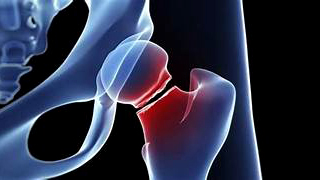At a glance
Learn how the Rees-Jones Trauma Center in Dallas, Texas integrated components of STEADI into its fall prevention program to identify modifiable risk factors and reduce future fall risk.
Story

The Rees-Jones Trauma Center at Parkland Memorial Hospital in Dallas, Texas is a Level 1 Trauma Center. In 2012, the trauma center opted to integrate components of STEADI into its fall prevention program. These changes provided an opportunity to improve the continuum of care between the patient, trauma center clinicians, clinical nursing staff, and the family members of the injured patient.
Putting STEADI into Action
The healthcare staff at the Rees-Jones Trauma Center consists of a multidisciplinary team of trauma surgeons, primary care physicians, trauma nurse clinicians, geriatricians, physical/occupational/speech therapists, pharmacists, and community health paramedics. Working together, the healthcare team implemented STEADI during a two-year older adult fall prevention program by:
Screening all older adults for falls, and identifying modifiable risk factors. To reduce future fall risk, the Rees-Jones Trauma Center created an injury flowsheet within each patient's electronic health record. This enabled staff to collect data on all older adults entering the hospital, and among those who had fallen, information specifically on the patient's fall. Data included items like the location of the fall, and the approximate height from which the patient fell. This information was then used to identify potential hazards, and prevent future falls.
- Evaluating gait, strength and balance. Each patient at risk for a future fall received a functional assessment. Results were used to determine whether additional medical services such as vision care and physical therapy were needed before the patient was discharged from the hospital.
- Conducting a focused physical exam, and addressing modifiable and/or treatable risk factors. Detailed physical exams were crucial to the success of the program. These exams were completed when the patient arrived at the trauma center, and were followed by additional exams after admission to the hospital. Each patient received an evaluation by a mental health specialist to assess the need for behavior and/or alcohol and drug-related interventions.
- Assessing and managing postural hypotension, or dizzy spells. If a patient suffered from dizzy spells, the cause was evaluated and addressed by the medical team.
- Reviewing and managing medications. Trauma center providers used the American Geriatrics Society Beers Criteria to assist in medication review for older adults. This criteria stresses the importance of avoiding certain medications that may be harmful, or "potentially inappropriate" for older adults.
- Increasing vitamin D supplements. Trauma nurse clinicians reviewed the patients' medical records during case management to determine whether a recommendation for vitamin D supplements should be given to the patient.
- Assessing visual alertness and improving vision. STEADI recommends referral to an ophthalmologist or an optometrist, as needed. These services were readily available to trauma service staff. If the team identified a potential vision issue during the patient's physical exams, a consult order was placed for evaluation before the patient was fully discharged from the hospital.
- Addressing home safety, and providing information on how to prevent falls. Brochure information was provided to patients and caregivers on home safety, including a home assessment checklist. Friends and/or family members were asked to complete the checklist and return it to medical staff before the patient was discharged so that appropriate fall prevention education and potential barriers to discharge could be addressed.
- Identifying community exercise and fall prevention programs. A community resources list was made available to patients and families by the medical staff. Outpatient therapies were also prescribed once patients were discharged from the hospital.

STEADI Improves Patient Outcomes
Using CDC's STEADI program to prevent older adult falls in a hospital-based setting improved the quality of life for many patients. Data collected from the falls prevention program at the Rees-Jones Trauma Center showed a statistically-significant decreased length of stay in the hospital. During the two year study, 2,784 older adult patients were admitted to the level one trauma center. Among this group, 62% sustained injuries after a fall. Before implementing STEADI, the average length of stay at the hospital was 7.9 days with 46.8% of patients discharged home. After STEADI implementation, the average length of stay decreased to 6.5 days with 54.5% of patients discharged home. In addition, 1.5% of fall patients returned with another fall before STEADI, while only 0.6% returned with a second fall after implementation. Results of year two showed a continued decreased stay of five days at the hospital with 63.6% of patients discharged home. Using STEADI's evidence-based approach in hospital-based settings can significantly improve injury prevention programs, improve patient outcomes, and prevent falls in older adults.
